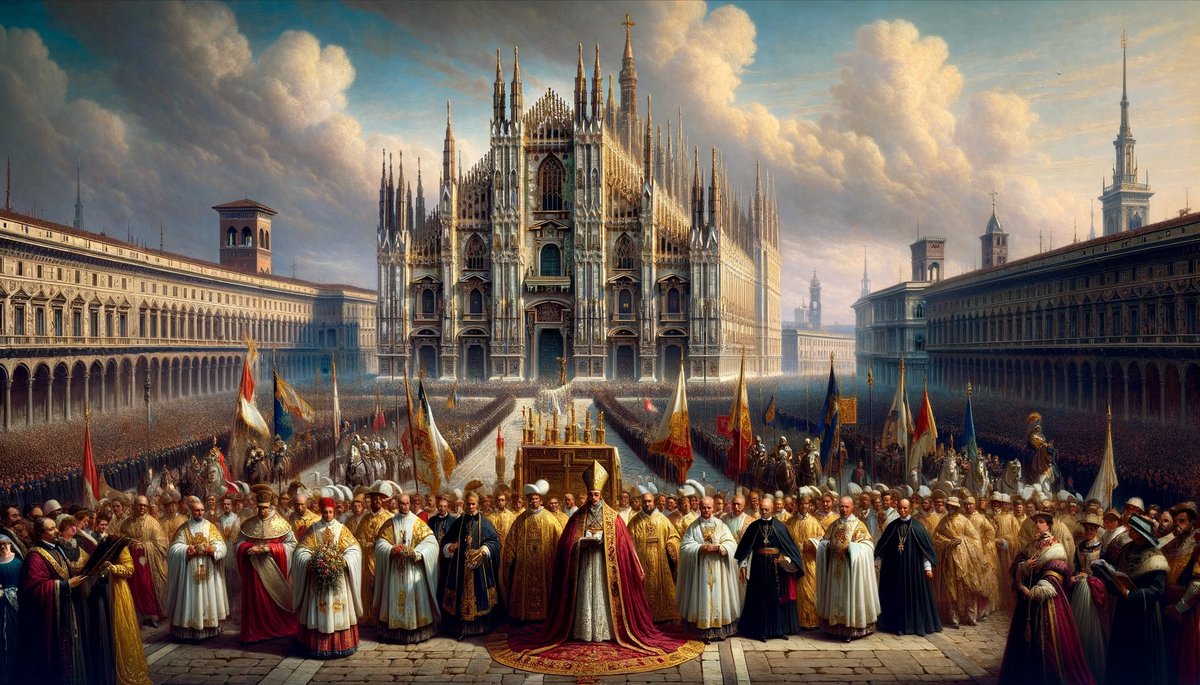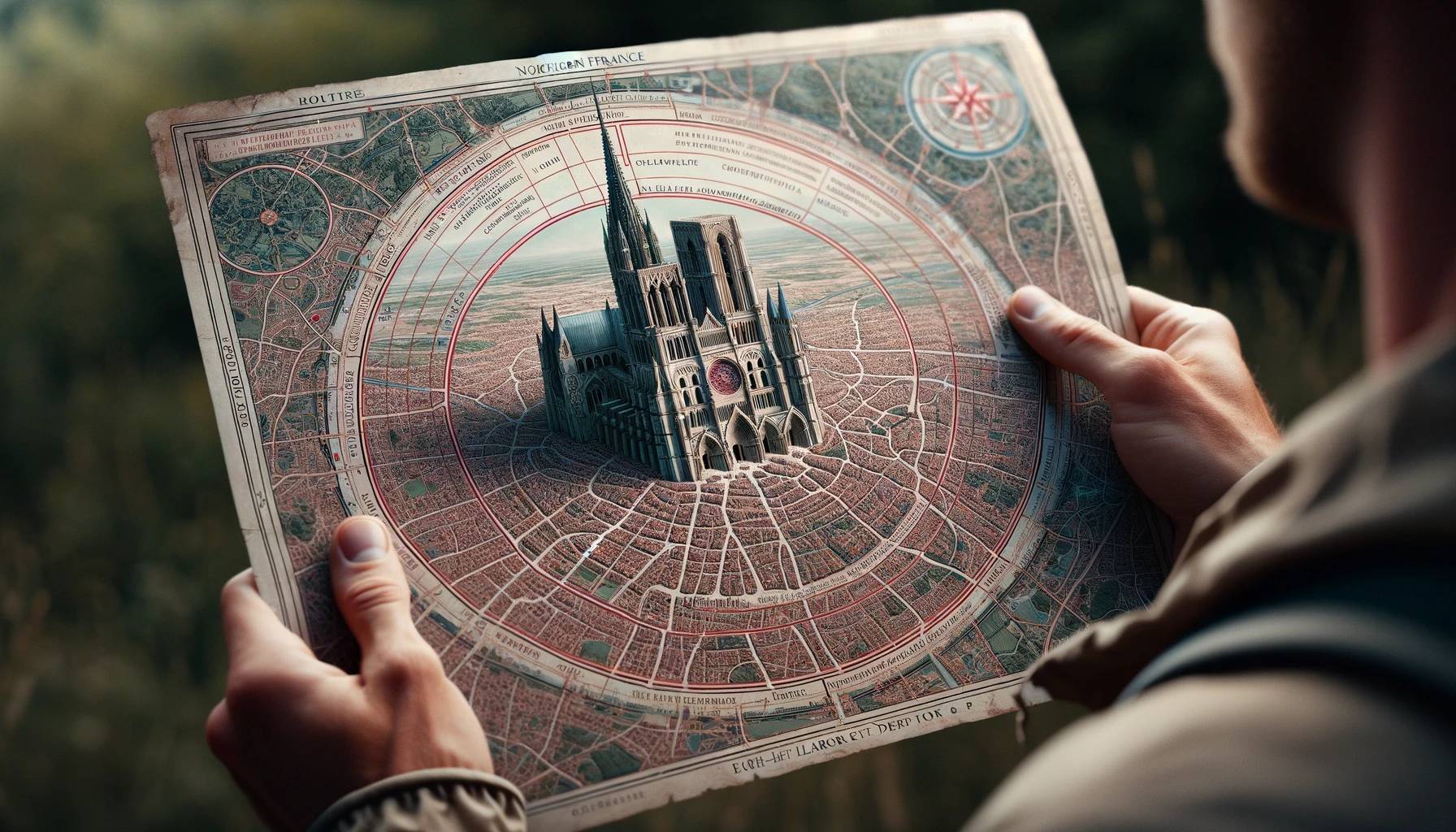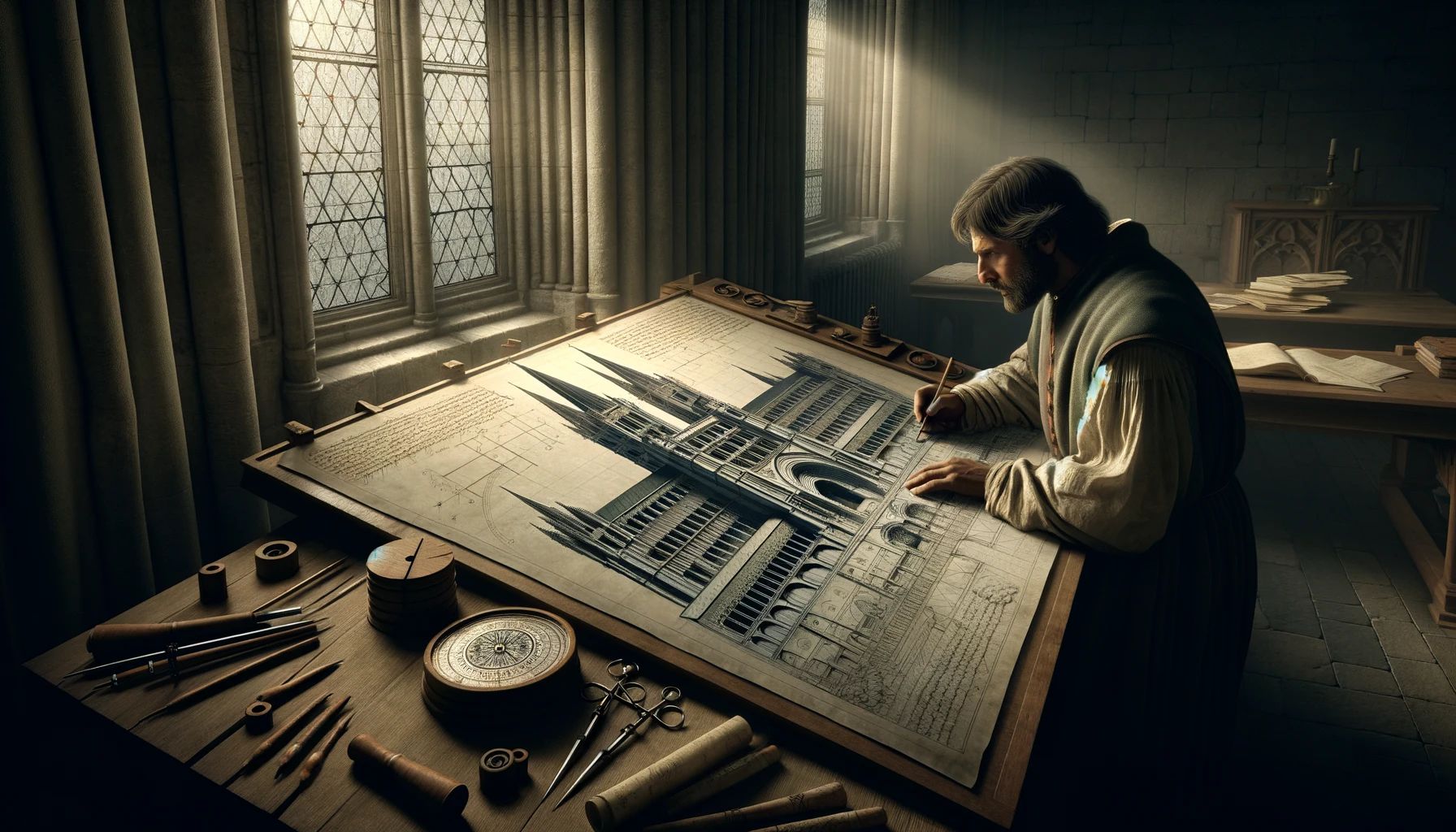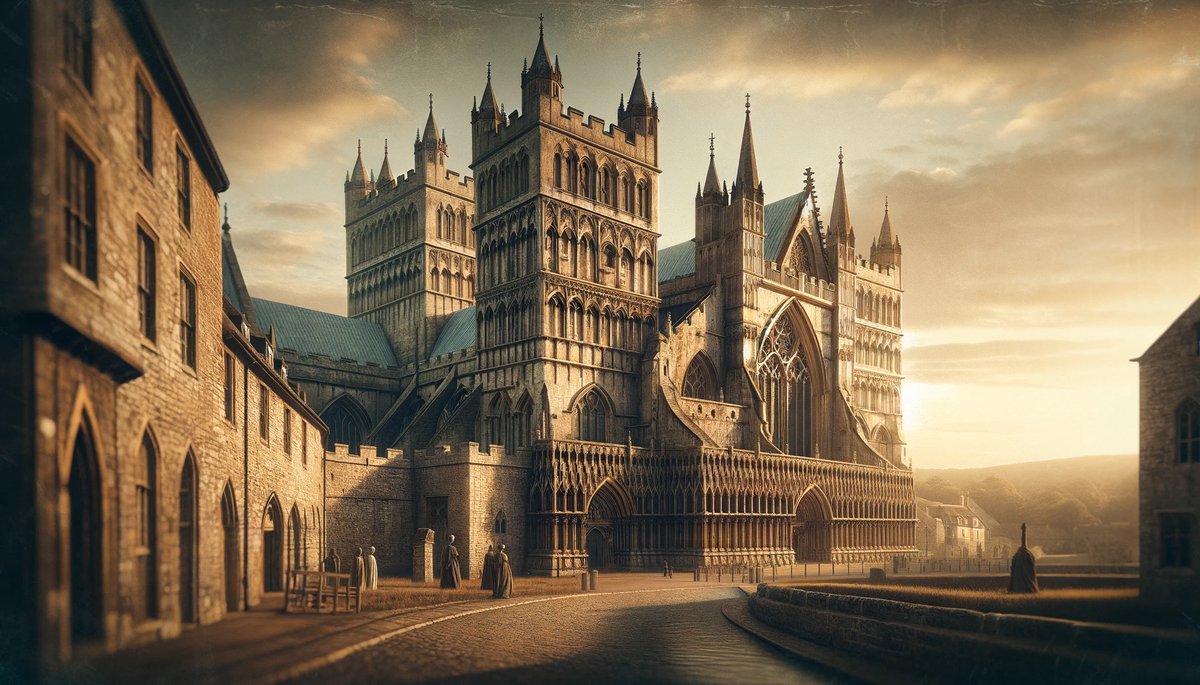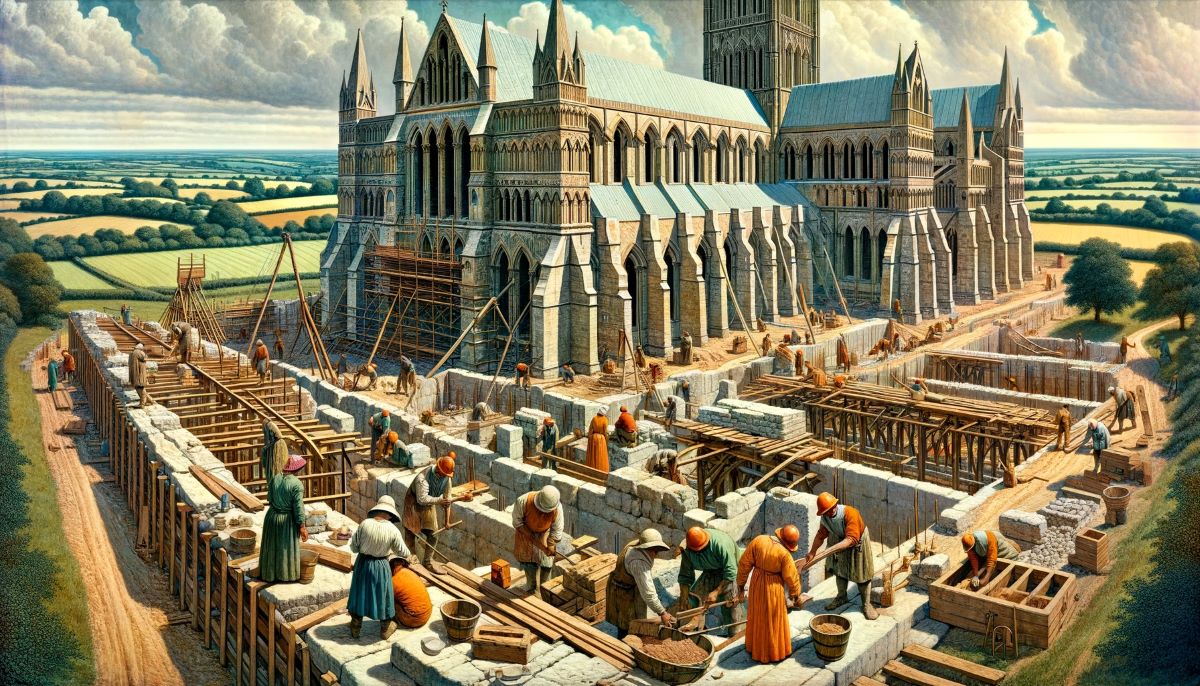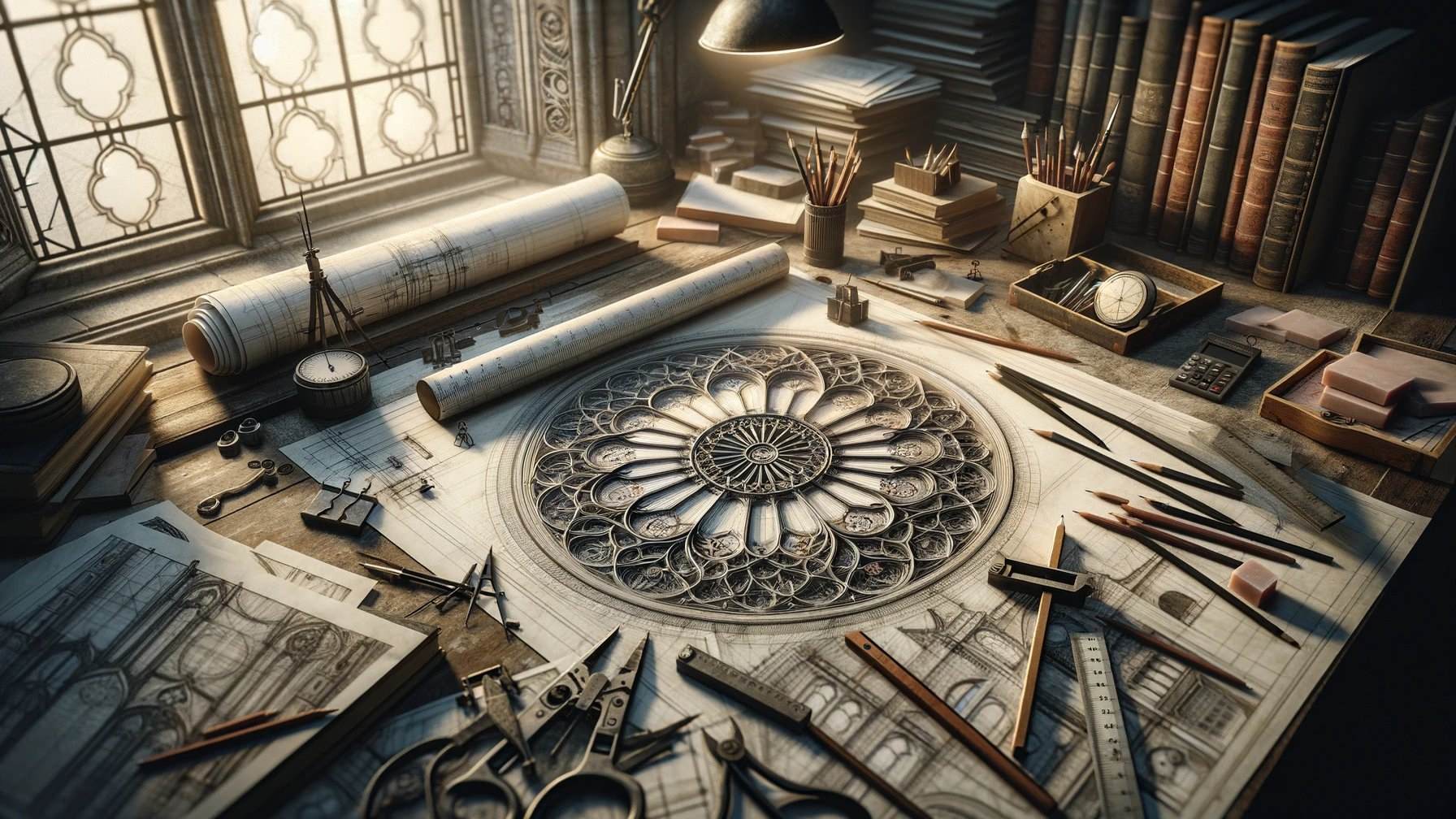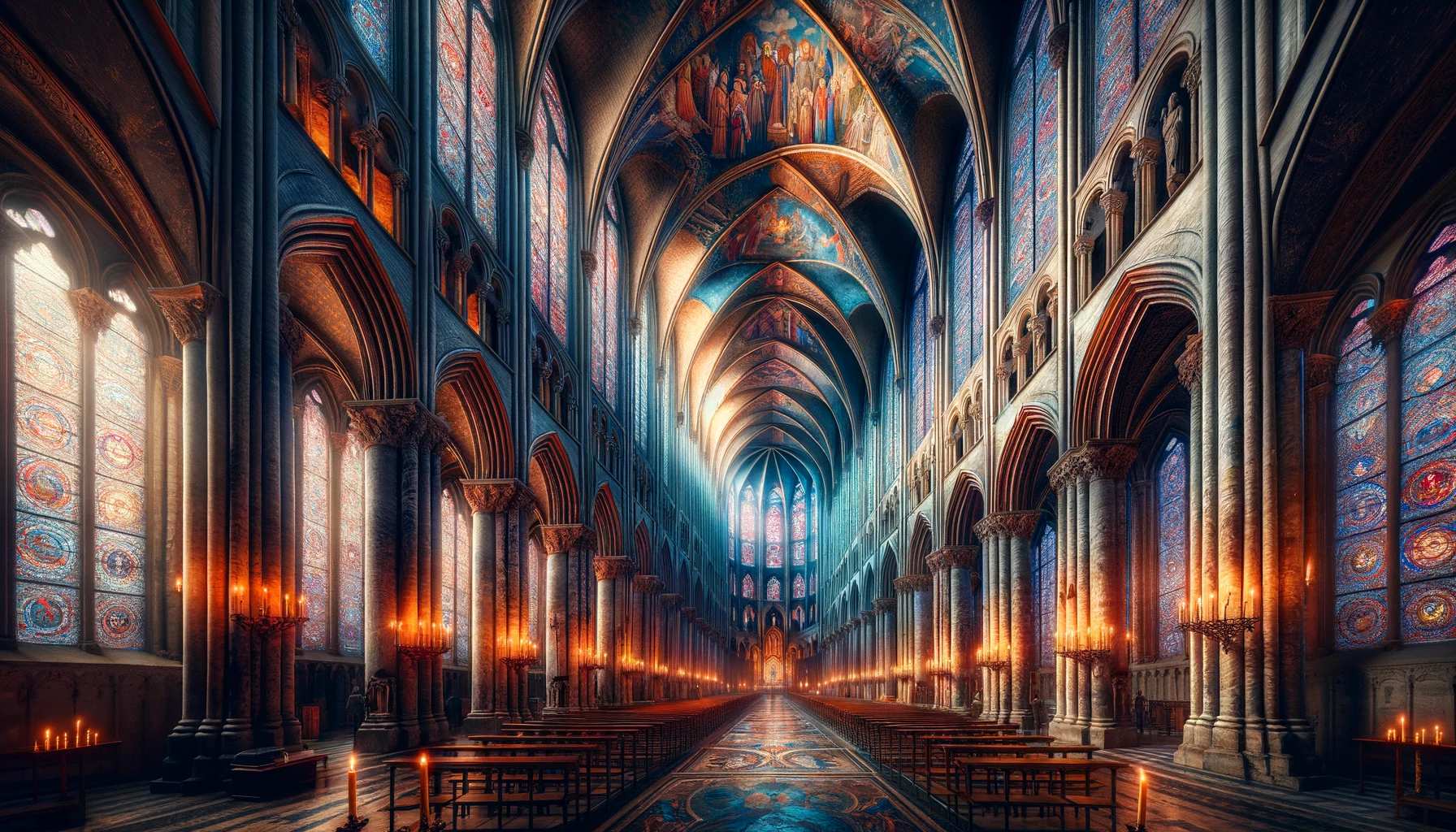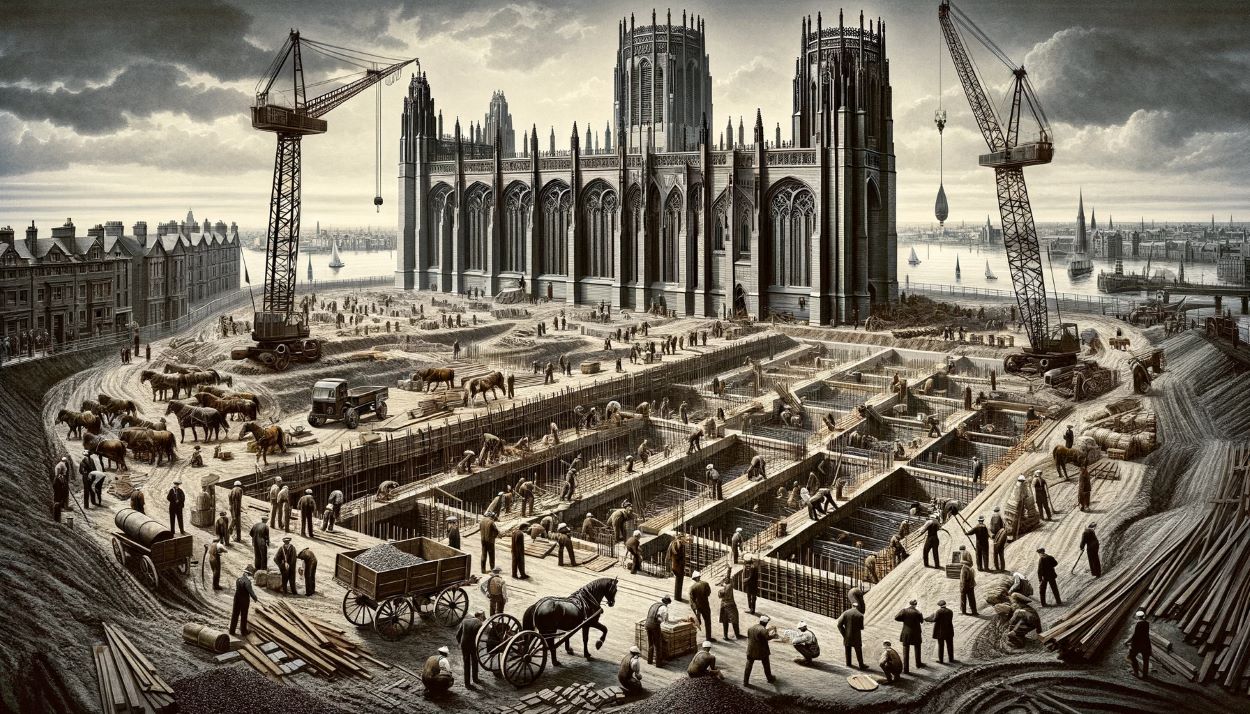Home>Arts and Culture>Why Was The Chartres Cathedral Built
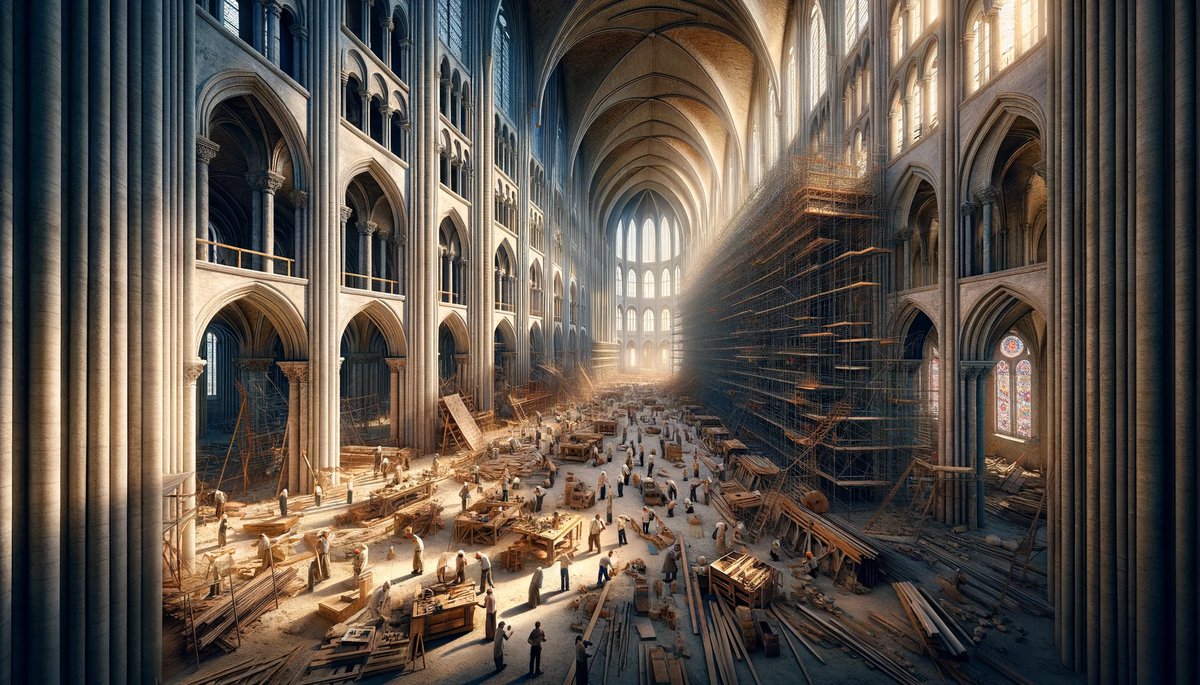

Arts and Culture
Why Was The Chartres Cathedral Built
Published: February 18, 2024
Jason DeRose, Managing Editor at Christian.net, uses his expertise in religion and journalism to deepen understanding of faith's societal impacts. His editorial leadership, coupled with a strong academic background, enriches the platform’s diverse content, earning him recognition in both journalism and religious circles.
Discover the history and significance of the Chartres Cathedral, a masterpiece of arts and culture, and explore the reasons behind its construction. Uncover the architectural marvel that has stood the test of time.
(Many of the links in this article redirect to a specific reviewed product. Your purchase of these products through affiliate links helps to generate commission for Christian.net, at no extra cost. Learn more)
Table of Contents
Introduction
Chartres Cathedral, a magnificent architectural marvel nestled in the picturesque town of Chartres, France, stands as a testament to the ingenuity and artistry of medieval craftsmen. This awe-inspiring structure, with its soaring spires and intricate stained glass windows, has captivated the hearts and minds of visitors for centuries. But what inspired the construction of this grand cathedral, and what purpose does it serve beyond its breathtaking beauty?
In this article, we will delve into the rich history, purpose, construction, and significance of Chartres Cathedral. From its humble beginnings to its enduring legacy, we will unravel the mysteries and marvels that make this sacred edifice a timeless symbol of human creativity and spiritual devotion. Join us on a journey through time and architecture as we explore the captivating story of Chartres Cathedral.
Read more: How Was Chartres Cathedral Built
The History of Chartres Cathedral
Chartres Cathedral, also known as the Cathedral of Our Lady of Chartres, has a storied history that dates back to the 12th century. The site of the cathedral has been a place of worship since ancient times, with the Romans building a temple to the Celtic goddess, Epona, on the same location. However, it was not until the 8th century that the first Christian church was constructed on the site.
The cathedral as it stands today began to take shape in the early 12th century when the previous structure was destroyed by a fire in 1194. This catastrophic event provided the impetus for the construction of the current Gothic cathedral, which was completed in a remarkably short span of time, by medieval standards.
The construction of Chartres Cathedral was overseen by a succession of skilled architects and master builders, each contributing their expertise to the evolving design. The cathedral's construction was completed in several phases, resulting in a harmonious blend of architectural styles, including Romanesque and early Gothic elements.
One of the most remarkable aspects of Chartres Cathedral is its collection of stained glass windows, which are considered among the finest in the world. These exquisite windows, dating from the 12th and 13th centuries, depict biblical narratives and saints in vibrant hues, illuminating the interior with a celestial glow.
Throughout its history, Chartres Cathedral has weathered periods of turmoil and restoration, standing as a resilient symbol of faith and endurance. Its survival through wars, revolutions, and natural disasters is a testament to the unwavering dedication of the clergy and the local community to preserve this sacred monument.
Today, Chartres Cathedral continues to draw pilgrims, art enthusiasts, and spiritual seekers from around the globe, offering a profound connection to the past and an enduring source of inspiration. Its historical significance and architectural splendor make it a cherished treasure of human heritage, inviting visitors to marvel at the craftsmanship and devotion that have stood the test of time.
The Purpose of Chartres Cathedral
The purpose of Chartres Cathedral extends far beyond its role as a mere architectural masterpiece. From its inception, this sacred edifice has served as a profound symbol of spiritual devotion, a center of pilgrimage, and a testament to the unwavering faith of the medieval community.
At the heart of Chartres Cathedral's purpose is its function as a place of worship and spiritual contemplation. As a cathedral dedicated to the Virgin Mary, it holds a special significance in the Christian faith, drawing pilgrims and worshippers seeking solace, inspiration, and a connection to the divine. The cathedral's sacred spaces, including the nave, chapels, and crypt, provide a sanctuary for prayer, reflection, and communal gatherings, fostering a sense of unity and reverence among visitors.
Moreover, Chartres Cathedral serves as a repository of religious art and symbolism, with its intricate sculptures, ornate carvings, and, most notably, its renowned stained glass windows. These artistic elements were not merely decorative embellishments but were designed to convey profound spiritual teachings and narratives to the largely illiterate medieval populace. The vibrant hues and intricate details of the stained glass windows were intended to illuminate the minds and hearts of worshippers, bringing to life the stories of the Bible and the lives of the saints in a visually captivating manner.
In addition to its spiritual significance, Chartres Cathedral played a pivotal role in the medieval economy and society. As a center of pilgrimage, it attracted throngs of devout travelers from near and far, fostering a vibrant community of merchants, artisans, and pilgrim lodgings in the vicinity of the cathedral. The influx of pilgrims not only enriched the local economy but also contributed to the cultural exchange and dissemination of knowledge, as visitors brought with them diverse perspectives and experiences from their respective regions.
Furthermore, the cathedral served as a unifying symbol for the townspeople of Chartres, instilling a sense of civic pride and identity. Its construction and ongoing maintenance required the collective efforts of the community, forging bonds of solidarity and shared purpose among the townsfolk. The cathedral's presence loomed large in the daily lives of the inhabitants, shaping their rituals, traditions, and communal celebrations.
In essence, the purpose of Chartres Cathedral transcends its physical form and architectural grandeur, encompassing spiritual, cultural, and communal dimensions that have resonated across the centuries. Its enduring significance as a place of worship, artistic expression, and communal gathering underscores the profound impact of this sacred monument on the lives of those who have been touched by its timeless presence.
The Construction of Chartres Cathedral
The construction of Chartres Cathedral stands as a remarkable testament to the ingenuity, craftsmanship, and unwavering dedication of the medieval builders and artisans who brought this architectural marvel to life. The cathedral's construction was initiated in response to a devastating fire that engulfed the previous structure in 1194, providing the impetus for the ambitious endeavor of erecting a grand Gothic cathedral in its place.
The construction of Chartres Cathedral unfolded in several phases, each marked by meticulous planning, innovative techniques, and a steadfast commitment to realizing a vision of transcendent beauty and spiritual significance. The architects and master builders of the cathedral drew upon a wealth of knowledge and expertise, incorporating elements of Romanesque and early Gothic styles to create a harmonious and awe-inspiring edifice.
One of the most remarkable aspects of the cathedral's construction is the speed with which it was completed, particularly by medieval standards. The main body of the cathedral, including the nave and transepts, was erected in just over 25 years, a feat made possible by the collaborative efforts of skilled craftsmen, laborers, and the unwavering support of the local community.
The construction of Chartres Cathedral also saw the integration of innovative architectural features that set it apart from its predecessors. The use of flying buttresses, pointed arches, and ribbed vaults not only endowed the cathedral with structural stability but also allowed for the incorporation of expansive stained glass windows, flooding the interior with ethereal light and color.
The meticulous craftsmanship and attention to detail exhibited in the construction of Chartres Cathedral are perhaps most strikingly evident in its renowned stained glass windows. These exquisite works of art, created by master glaziers, depict biblical narratives, saints, and symbolic motifs with a level of artistry and precision that continues to captivate visitors to this day.
The construction of Chartres Cathedral was not merely a feat of engineering and labor but a profound expression of faith, devotion, and artistic innovation. It stands as a testament to the enduring legacy of medieval craftsmanship and the enduring power of human creativity to transcend the boundaries of time and space.
The completion of Chartres Cathedral marked a triumph of human endeavor, a soaring testament to the heights of medieval architectural achievement, and a timeless beacon of spiritual inspiration for generations to come.
The Significance of Chartres Cathedral
The significance of Chartres Cathedral extends far beyond its architectural grandeur; it embodies a profound legacy that resonates through the annals of history and continues to captivate the hearts and minds of visitors from around the world. As a testament to the enduring spirit of human creativity and spiritual devotion, the cathedral holds multifaceted significance that transcends its physical presence.
At its core, Chartres Cathedral stands as a timeless symbol of medieval craftsmanship and architectural innovation. Its construction, marked by the integration of pioneering Gothic elements and the meticulous artistry of master builders, represents a pinnacle of achievement in medieval architecture. The cathedral's soaring spires, intricate carvings, and resplendent stained glass windows bear witness to the unwavering dedication and ingenuity of the craftsmen who brought this sacred edifice to fruition.
Moreover, Chartres Cathedral holds profound religious significance as a revered place of pilgrimage and spiritual contemplation. Dedicated to the Virgin Mary, it has drawn countless pilgrims seeking solace, inspiration, and a connection to the divine. The cathedral's sacred spaces, adorned with religious iconography and evocative symbolism, have provided a sanctuary for prayer, reflection, and communal worship, fostering a sense of spiritual unity and reverence among visitors.
The cathedral's renowned collection of stained glass windows, considered among the finest in the world, serves as a testament to the power of visual storytelling and religious instruction. These vibrant windows, dating back to the 12th and 13th centuries, depict biblical narratives and the lives of saints in a kaleidoscope of colors, illuminating the interior with a celestial glow and imparting profound spiritual teachings to worshippers and art enthusiasts alike.
Furthermore, Chartres Cathedral holds a place of honor in the annals of art history, serving as a muse for countless artists, writers, and scholars. Its architectural splendor and rich symbolism have inspired creative works across diverse disciplines, leaving an indelible imprint on the cultural landscape. The cathedral's enduring presence in the realm of artistic expression underscores its significance as a source of inspiration and contemplation for generations of creative minds.
In essence, the significance of Chartres Cathedral lies in its role as a living testament to the enduring legacy of human creativity, spiritual devotion, and cultural heritage. Its timeless allure and profound impact on visitors stand as a testament to the enduring power of this sacred monument to transcend the boundaries of time and space, leaving an indelible mark on the tapestry of human history.
Conclusion
In conclusion, Chartres Cathedral stands as a timeless testament to the ingenuity, faith, and artistic brilliance of the medieval era. From its humble origins to its enduring legacy, the cathedral has woven a rich tapestry of history, spirituality, and architectural innovation that continues to inspire awe and reverence.
The cathedral's construction, marked by the integration of pioneering Gothic elements and the meticulous artistry of master builders, represents a pinnacle of achievement in medieval architecture. Its soaring spires, intricate carvings, and resplendent stained glass windows bear witness to the unwavering dedication and ingenuity of the craftsmen who brought this sacred edifice to fruition.
Moreover, Chartres Cathedral holds profound religious significance as a revered place of pilgrimage and spiritual contemplation. Dedicated to the Virgin Mary, it has drawn countless pilgrims seeking solace, inspiration, and a connection to the divine. The cathedral's sacred spaces, adorned with religious iconography and evocative symbolism, have provided a sanctuary for prayer, reflection, and communal worship, fostering a sense of spiritual unity and reverence among visitors.
The cathedral's renowned collection of stained glass windows, considered among the finest in the world, serves as a testament to the power of visual storytelling and religious instruction. These vibrant windows, dating back to the 12th and 13th centuries, depict biblical narratives and the lives of saints in a kaleidoscope of colors, illuminating the interior with a celestial glow and imparting profound spiritual teachings to worshippers and art enthusiasts alike.
Furthermore, Chartres Cathedral holds a place of honor in the annals of art history, serving as a muse for countless artists, writers, and scholars. Its architectural splendor and rich symbolism have inspired creative works across diverse disciplines, leaving an indelible imprint on the cultural landscape. The cathedral's enduring presence in the realm of artistic expression underscores its significance as a source of inspiration and contemplation for generations of creative minds.
In essence, the significance of Chartres Cathedral lies in its role as a living testament to the enduring legacy of human creativity, spiritual devotion, and cultural heritage. Its timeless allure and profound impact on visitors stand as a testament to the enduring power of this sacred monument to transcend the boundaries of time and space, leaving an indelible mark on the tapestry of human history.
